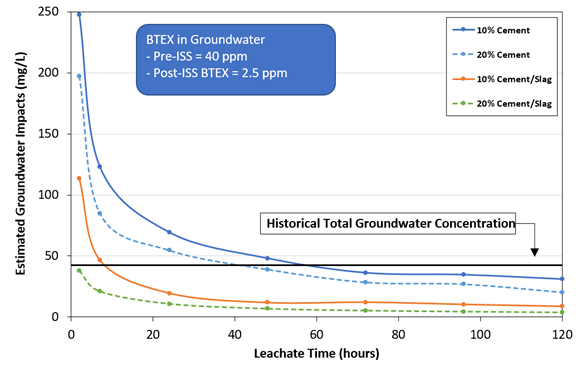

ISS treatability testing was conducted on soils impacted with benzene, toluene, ethylbenzene, and xylenes (BTEX). Loureiro evaluated several mixtures of cement and slag that would support the weight of an above grade tank. The leachability of BTEX was also evaluated in the treatability testing. The treatability test results were used to predict BTEX concentrations of the leachate under advective groundwater flow conditions through modeling. Based on the ISS treatability and modeling results, all treated test conditions showed:
- Hydraulic conductivities reached the goal of 1 x 10-6 centimeters per second (cm/s) or lower
- Compressive strength measurements met the targeted criteria of 50 pounds per square inch (psi) or greater
- A significant reduction in leachable BTEX concentrations, with an estimated range in groundwater BTEX concentrations of 2 to 5 mg/L downgradient of the treatment area
- The cement with slag test conditions outperformed the cement only mixtures
The client applied ISS at the site and long term groundwater monitoring showed that downgradient BTEX concentrations declined rapidly from a pre-ISS concentration of approximately 40 mg/L to a post-ISS concentration of approximately 2.5 mg/L (as predicted by the modeling).






